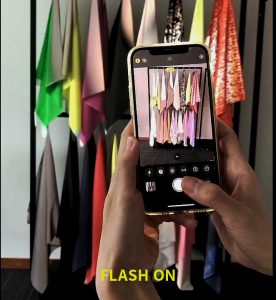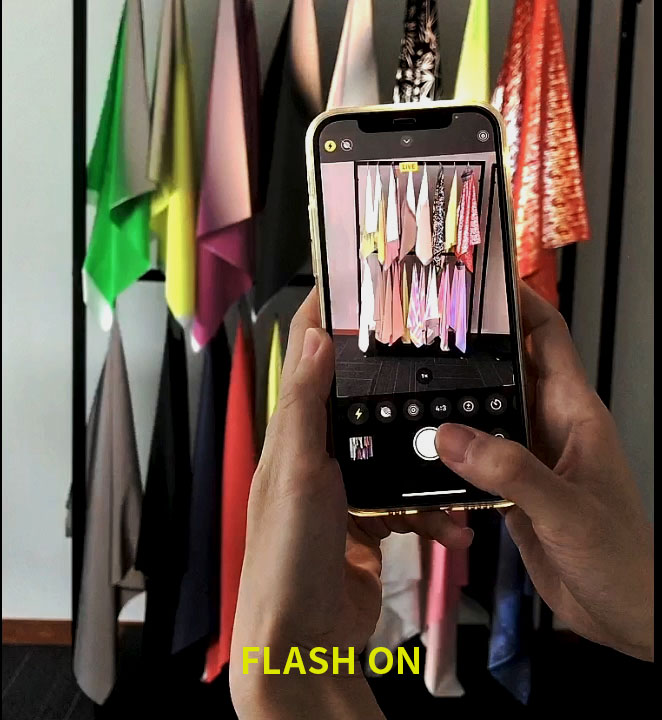Reflective fabrics play a important role in enhancing visibility during low-light or nighttime conditions by reflecting light back toward its source. When you have a piece of reflective fabric in hand, how can you effectively check its reflective effects? Observing this unique feature is simple and requires only everyday tools like a flashlight or a smartphone. This guide will walk you through detailed methods, including different approaches to using your flashlight or smartphone for optimal observation.

Using a Flashlight to Observe Reflective Effects
A handheld flashlight is a simple and effective tool for assessing the reflective properties of a fabric. Here’s how:
- Prepare the Fabric and Environment:
Place the reflective fabric in a dark or dimly lit room.
Ensure the fabric is smooth and flat to avoid distortion of the reflected light. - Position the Flashlight:
Hold the flashlight at eye level, pointing directly at the fabric.
Maintain a distance of 1-2 meters to observe the reflection clearly. - Observe the Reflection:
Turn on the flashlight and direct the beam at the fabric.
Note how the fabric reflects the light back toward the flashlight. High-quality reflective fabrics will create a bright, concentrated glow.
This method mimics real-world conditions, such as vehicle headlights illuminating reflective materials on safety gear or signage.
Using a Smartphone to Observe Reflective Effects
Smartphones offer versatile ways to examine the reflective properties of fabrics, leveraging their built-in flashlight and camera functions. Below are two effective methods:
a. Flash Photography
This method captures the reflective effect in still images, making it ideal for detailed comparison or documentation.
- Set Up the Environment:
Place the reflective fabric in a dark room to enhance contrast.
Ensure the smartphone’s flash is enabled. - Capture the Photo:
Position the smartphone directly in front of the fabric, 1-2 meters away.
Take a photo using the flash. - Analyze the Image:
Review the photo to see the reflective effect.
High-quality reflective fabrics will appear as bright spots or patterns against the darker 4background.
This method is particularly useful for assessing how reflective materials will perform in photographic settings, such as during nighttime activities.
b. Video Mode with Flashlight On
For real-time observation, the smartphone’s video mode combined with its flashlight is a powerful option.
- Activate the Flashlight:
Open the camera app and switch to video mode.
Turn on the flashlight (often labeled as “torch” or “flash”). - Record the Video:
Aim the smartphone at the reflective fabric from a distance of 1-2 meters.
Move the smartphone slightly to observe how the reflective effect changes with angles. - Evaluate the Reflection:
Playback the video to observe the consistency and brightness of the reflective effect.
Note any differences in reflection across the fabric’s surface.
This method is especially helpful for observing the reflective fabric in dynamic conditions, such as movement or varying angles of light.
Tips for Accurate Observation
Control Lighting: Ensure the environment is dark enough to highlight the reflective effect.
Check Light Source Angle: Reflective fabrics are designed to return light to the source. Align the flashlight or smartphone light with your line of sight for the best results.
Use Multiple Methods: Combining flashlight and smartphone techniques provides a comprehensive understanding of the fabric’s performance.
By following these methods, you can effectively observe and evaluate the reflective effects of fabrics for safety gear, fashion applications, or outdoor equipment. The tools required are minimal, but the insights gained can ensure optimal selection and usage of reflective materials.

